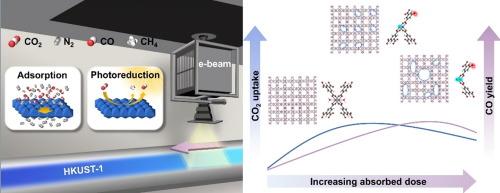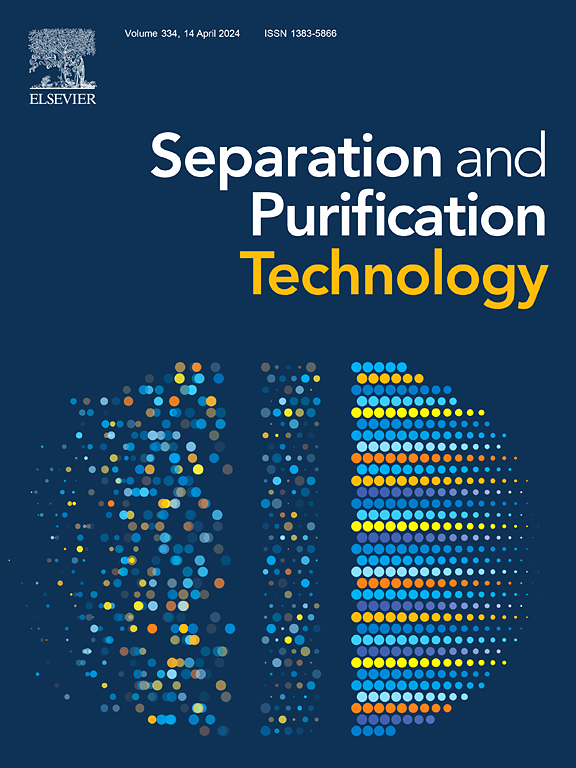Scalable upgrading metal–organic frameworks through ambient and controllable electron-beam irradiation for CO2 capture and conversion
IF 8.1
1区 工程技术
Q1 ENGINEERING, CHEMICAL
引用次数: 0
Abstract
Some well-established metal–organic frameworks (MOFs) have shown their commercialization for CO2 capture and conversion. However, the development of effective and scalable modification technologies that are broadly applicable to existing MOFs still face significant challenges. Here, in contrast to sophisticated synthesis, we report a general and facile upgrading strategy for kilogram-level MOFs including IRMOF, MIL, and ZIF through ambient, controllable and cost-effective electron-beam (e-beam) irradiation. Specially, the modified HKUST-1 achieves a 16.6% improvement in CO2 uptake with high selectivities for CO2/N2 mixtures, and a 2-fold production rate of CO under visible-light illumination. As demonstrated by newly-developed in-situ X-ray diffraction infrared Fourier transform (DRIFT) technology and theoretical calculations, e-beam induces the metal node reduction, ligand functionalization, and pore architecture manipulation via radiolysis of trapped water molecules, synergistically promoting the CO2 polarization and activation. Our study reveals the advantageous of e-beam irradiation effects for MOFs, which are often considered negative in many areas.

求助全文
约1分钟内获得全文
求助全文
来源期刊

Separation and Purification Technology
工程技术-工程:化工
CiteScore
14.00
自引率
12.80%
发文量
2347
审稿时长
43 days
期刊介绍:
Separation and Purification Technology is a premier journal committed to sharing innovative methods for separation and purification in chemical and environmental engineering, encompassing both homogeneous solutions and heterogeneous mixtures. Our scope includes the separation and/or purification of liquids, vapors, and gases, as well as carbon capture and separation techniques. However, it's important to note that methods solely intended for analytical purposes are not within the scope of the journal. Additionally, disciplines such as soil science, polymer science, and metallurgy fall outside the purview of Separation and Purification Technology. Join us in advancing the field of separation and purification methods for sustainable solutions in chemical and environmental engineering.
 求助内容:
求助内容: 应助结果提醒方式:
应助结果提醒方式:


